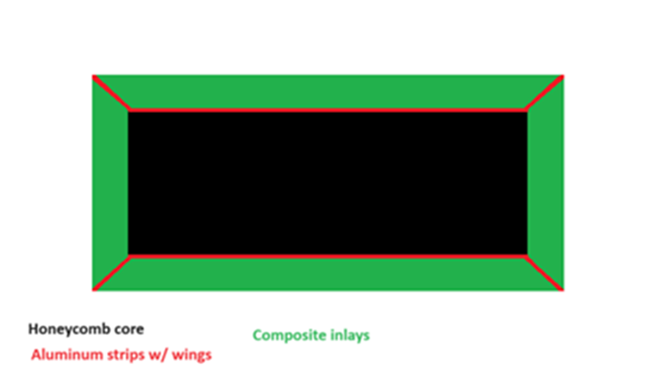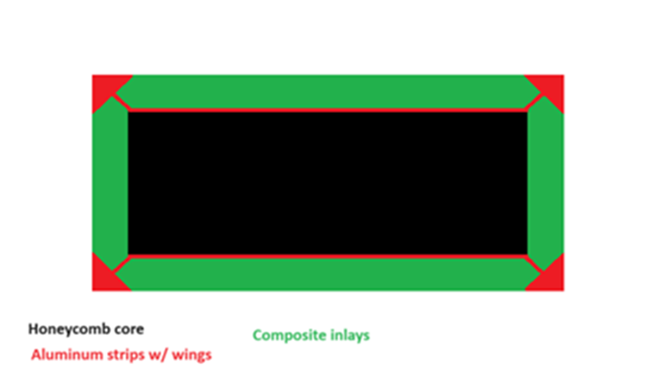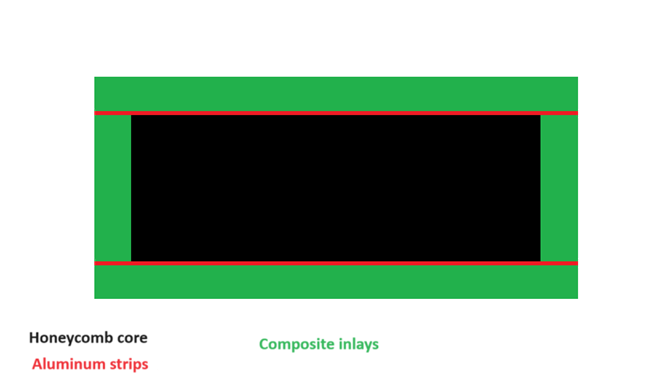Welcome to Honeycomb-Hockey.tech
The Story of the Search for a Lightweight yet Unbreakable Ice Hockey Stick.
The Current State of the Art
Modern hockey sticks have come a long way from the days of the first wooden sticks. Wooden sticks were used in the NHL and other leagues and countries for decades, yet their weight, as well as their tendency to warp and break, left much room for improvement. After a brief period of experimentation with aluminum sticks, the use of composite sticks became the norm at nearly all levels of play in the early 2000s. Composite sticks are very lightweight, do not warp and can have their characteristics (flex, blade curvature, etc.) consistently reproduced so that players can rely on the same performance from one stick to the next. However, breakage continues to remain a significant issue with composite sticks.
The First Step Towards a Solution
Drawing on decades of experience in the ski world, an inventor applied for a U.S. patent on a honeycomb core hockey stick on January 9, 2024. Aluminum honeycomb is an extremely strong, yet incredibly lightweight material. It adds 1-2 ounces in weight to a hockey stick yet renders it virtually unbreakable under normal playing conditions. A layer of aluminum on the top and bottom of the open cells to create a sandwich-type construction further strengthens the stick.
An Overlooked Variable
After reviewing the design in early February 2024, an astute engineer from a major sporting goods manufacturer made the following observation:
"It’s typically impact from other sticks on the corners of the shaft that create the micro fractures and delamination (that) lead to the eventual catastrophic failure, which a different core material won't prevent."
Back to the Drawing Board
After spending several days mulling over various solutions to the engineer's concerns, the inventor concluded that a partial exoskeleton was the best construction, the first iteration of which was this design (cross-sectional view):
The aluminum strips bonded to the top and bottom of the open cells of the honeycomb core would have wings extending at a 45 degree angle from their corners. These wings would be exposed to absorb any direct blows to the edges of the shaft, thus protecting the composite material, which would be inlaid along the four sides of the stick's shaft.
Close but No Cigar
Once again, our savvy engineer delivered his opinion:
"...when you have something that’s primarily loading in flexion that’s transverse to the direction the materials are laid, you get high stress concentrations developing at the interface of materials as they have different Young’s Moduli. It creates a high shearing force which, once you have cracks, (will) propagate easily.
I’m not saying it wont work, I’m just saying it needs to be validated. It’s definitely possible to build a stick like this, but there are a lot of things to balance and test with so many variables in the construction."
Floating Free
To address the engineer's concerns, the inventor made the following modification to his design (cross-sectional view):
By adding a triangular shaped cap to the wings, a recessed area is created on each side of the wings which allows the composite inlays to be held in place mechanically (i.e. without adhesive), and thus able to move freely relative to the core and the wings during flexion and compression of the stick. Of course, other shapes could also be used to make the caps, such as circular tubing. Extending the outer sides of the triangles towards the middle of each inlay is yet another possibility.
Our Engineer Responds...
Engineer: If you separate the box into four separate pieces that can move/slide independently you’ve reduced the bending stiffness of the shaft drastically. Think about an I-Beam, but the shear-flange isn’t connected to the top and bottom flanges of the I. If everything can shift, it’s not going to be anywhere near as stiff as the resistance to the shear forces created in bending will no longer exist.
Inventor: Can this be rectified by using carbon fiber with a higher Young’s Modulus?
Engineer: Increasing the thickness or modulus of the carbon would make it stiffer. Doing some hand calcs to find the second moment of inertia for some different constructions will help to find if you’re in the right ball park.
The Birth of the H-Frame
Now that the aluminum exo-skeleton was the load-bearing frame of the stick, the inventor realized it was not necessary to protect the composite inlays from microfractures as they would no longer be the cause of catastrophic failure of the stick. The emphasis was now on protecting the sides of the core from slashes, which was best accomplished by extending the aluminum strips past the core to where they would be flush with the lateral composite inlays. 
As for the issue of differing moduli of elasticity between aluminum and carbon fiber, and the resultant high shearing forces, the inventor realized he needed an adhesive with a lower modulus of elasticity than either the aluminum or the carbon fiber. The solution: polyurethane adhesive (AKA windshield sealant). It provides a tough yet flexible bond that also serves to dampen vibration.
Interested manufacturers may direct licensing inquiries to inventor<at>honeycomb-hockey.tech.